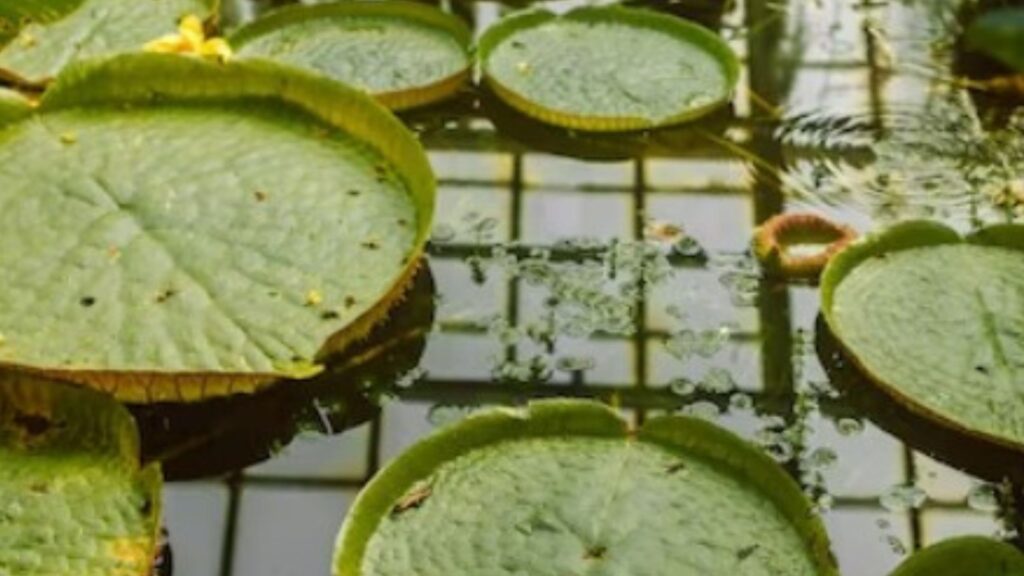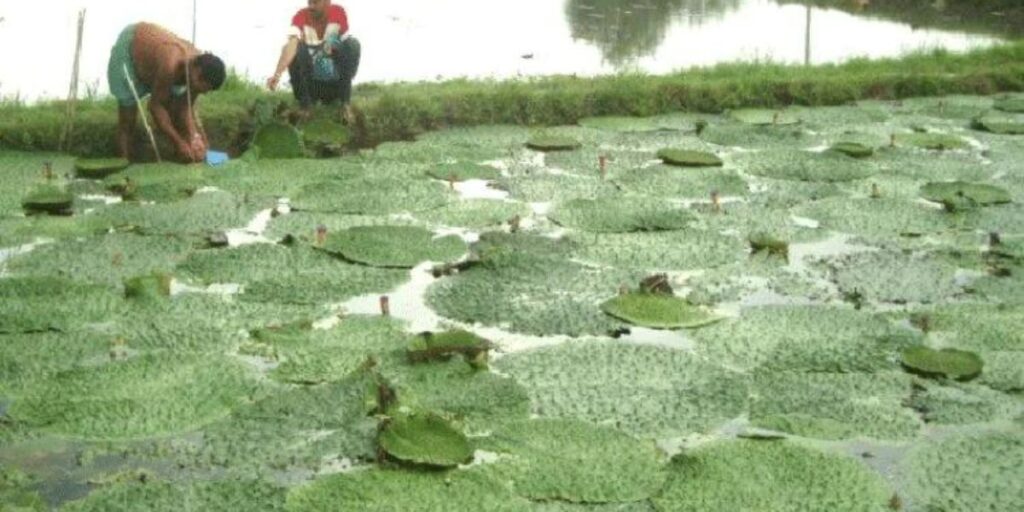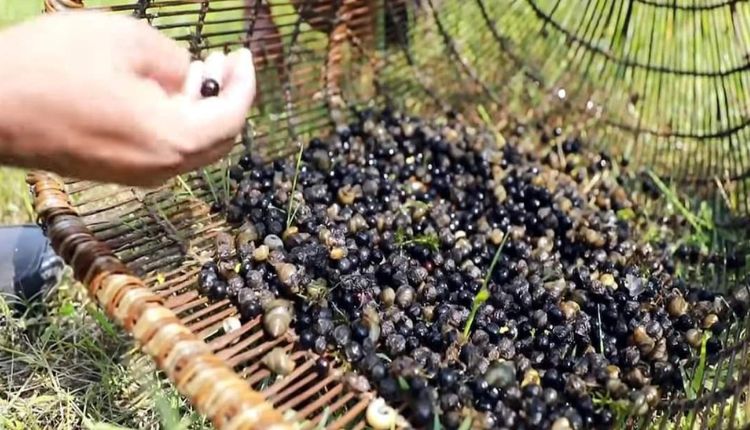Madhubani & Makhana
Madhubani Makhana hub, a cultural gem nestled in the heart of Bihar, India, is renowned for its vibrant art, rich traditions, and an agricultural marvel – makhana.

For the uninitiated, makhana, also known as fox nuts or lotus seeds, is a staple agricultural product in this region. Its significance extends beyond the realm of agriculture, permeating the socio-economic fabric of Madhubani.
The production of the Madhubani Makhana hub is not just an economic activity; it’s a way of life, deeply entrenched in the region’s culture. It’s fascinating how a small, humble seed can foster community ties, fuel local economies, and even form the basis for festive celebrations. The annual ‘Makhana Madhubani Festival,’ for instance, is a testament to the cultural importance of makhana in Madhubani. Local artisans, farmers, and vendors come together to celebrate their shared heritage, showcasing the versatility of makhana in various culinary delights and handicrafts.
Additionally, the Makhana wholesale price in Bihar significantly influences the livelihoods of many local families, highlighting its economic significance.
On the economic front, makhana production plays a pivotal role in bolstering the livelihoods of many families in Madhubani. As a labor-intensive crop, makhana offers employment opportunities for residents, particularly during the harvesting season. Additionally, the revenue generated from the sale of makhana contributes significantly to the region’s economy. With increasing demand for makhana nationally and globally, Madhubani is a bustling hub of makhana production. The presence of a Makhana factory in Bihar further amplifies the growth and potential of the Makhana business in India, making it a key player in the industry.
In essence, makhana in Madhubani is more than just a crop; it’s a symbol of cultural pride, a source of economic prosperity, and an integral part of the region’s identity. The significance of makhana in Madhubani cannot be overstated, as it represents the rich heritage and hardworking spirit of its people. As we delve deeper into the world of makhana and the role of the Makhana Manufacturer, we’ll explore the unique cultivation techniques, nutritional benefits, and the rising popularity of fox nuts. So, stay with us as we embark on this exciting journey through the heart of makhana in Madhubani production.
Understanding the Fox Nut Phenomenon
Stepping into the heart of the matter, let’s talk about fox nuts. Now, you may wonder: “What exactly are fox nuts?” Well, fox nuts, also known as ‘gorgon nuts’ or ‘lotus seeds’, are essentially the seeds of a plant called Euryale Ferox, found in wetlands across Asia. These seeds are what we refer to as makhana when they are popped, much like popcorn, and are a staple in many South Asian dishes.
The connection between fox nuts and makhana in Bihar is quite simple: The fox nut production in Bihar involves the meticulous harvesting, drying, and finally roasting of these seeds. This age-old process has been passed down through generations, resulting in a cluster of makhana production hubs across Bihar. The final product is a light, crunchy, and delicious snack that not only satisfies cravings but also holds significant nutritional value. Fox nut production in Bihar continues to play a crucial role in both local cuisine and the state’s economy, showcasing its cultural importance and culinary versatility.
Fox Nuts, The Powerhouse of Nutrition
What makes fox nuts such a coveted snack? The answer lies in their nutritional content. They are a powerhouse of protein, carbohydrates, fiber, and minerals like magnesium, potassium, and phosphorus. In addition, they are low in cholesterol, sodium, and saturated fats, making them an excellent snack for those watching their weight or managing their heart health. They are rich in antioxidants, which help fight damaging free radicals in the body, promoting overall well-being.
Moreover, traditional Ayurvedic practices suggest that fox nuts have calming properties, aiding in stress management and better sleep. Science backs this up too, with studies showing that they contain an amino acid called L-arginine that can potentially improve cardiovascular health.
The Rising Popularity of Fox Nuts
Over the past few years, Many makhana brands in India have gained immense popularity, transcending their role from a regional snack to a global superfood. The reason? Their health benefits are being recognized and appreciated by health enthusiasts worldwide. From being featured in diet plans of athletes to becoming an integral part of the meals of those with dietary restrictions, fox nuts have truly become a phenomenon. The rise of makhana brands in India reflects a growing appreciation for their nutritional value and versatility in modern diets.
They offer a guilt-free snacking experience, thanks to their low-calorie and high-fiber content. Whether you prefer them roasted with a pinch of salt, or flavored with herbs for an added kick, fox nuts are versatile and can be tailored to suit any palate.

Plus, they’re easy to incorporate into your diet – you can add them to your salads, soups, or even yogurt for an extra crunch. For the best quality makhana, look for varieties that are fresh and carefully processed to preserve their natural goodness. The best quality makhana ensures you get maximum nutritional benefits. Always choose the best quality makhana for an enjoyable and healthy snacking experience.
As we continue our journey through Bihar’s makhana-producing states in Indian culture, it’s clear that the fox-nut phenomenon is not just about a trendy snack. It’s a testament to the region’s rich agricultural history, the nutritional wisdom of traditional Indian diets, and the potential of sustainable farming practices. The significance of makhana as a staple food and its cultural importance as a Makhana wholesale Supplier in Madhubani highlight its deep-rooted connection to centuries of history and culture in the region. So, next time you munch on some makhana, remember you’re partaking in a tradition rooted in centuries of history and culture.
Makhana Hub in Madhubani
As we traverse further into the heartland of Bihar, we discover Madhubani, a vibrant district pulsating with a unique cultural rhythm. Here, amidst its picturesque landscapes and lush fields, a remarkable industry thrives on makhana cultivation and production.
A Cluster of Makhana Production
A visit to Madhubani will reveal an extraordinary sight. Here, makhana production is not just an economic activity but part of the fabric of daily life. From the crack of dawn, you’ll find farmers engaged in the arduous process of harvesting these precious seeds from lotus plants. The communities here have made an art out of cultivating this superfood, with their efforts culminating in clusters of makhana production spread throughout the region.
The Ideal Location for Makhana Cultivation
So, what makes Madhubani such fertile ground for makhana cultivation? Firstly, the district’s climatic conditions play a significant role. Makhana thrives in stagnant water bodies, and Madhubani, with its abundance of ponds and waterlogged areas, provides the perfect habitat. Secondly, the region’s rich alluvial soil, replenished by the mighty Koshi and Bagmati rivers, enhances the growth of the Euryale Ferox plant from which makhana is harvested. Lastly, the resilient and inventive local communities who have honed their makhana farming techniques over generations contribute significantly to making Madhubani a hub for makhana production.
Unique Techniques and Traditional Methods
The traditional methods used in makhana production are as fascinating as they are effective. The process begins with the sowing of seeds in the muddy bottoms of ponds. As the plants grow and flower, farmers dive into these ponds to handpick the seeds, a labor-intensive practice passed down through generations. Once harvested, the seeds undergo a unique process of roasting, where they are heated at high temperatures causing them to pop, transforming them into the white, fluffy kernels we recognize as makhana.
This meticulous process, shaped by centuries of tradition and knowledge, is a testament to the dedication and expertise of the local farmers. It serves not just as an economic activity, but also as a preservation of culture and heritage, intimately tied to the region’s identity.
As we delve deeper into makhana, we gain a newfound appreciation for this humble superfood and the communities that cultivate it. The heartland of Madhubani has much to teach us about sustainable farming, cultural resilience, and the magic that can be found in a simple seed.

Makhana Production in Bihar and Other States in India
Setting our sights beyond the makhana hub in Madhubani, let’s broaden our perspective to encompass the entire state of Fox nut production in Bihar and other makhana-producing regions in India. It’s fascinating to see how this humble water lily seed has not only cemented its place in Bihar’s economy but also found its niche in various other Indian states.
Makhana Production in Bihar
When it comes to makhana production, Bihar is undeniably a powerhouse. The state provides over 90% of the country’s total makhana yield.
This isn’t surprising considering its favorable climate and fertile soil that create an ideal environment for the growth of Euryale Ferox, the plant from which makhana is derived. The industry employs thousands of people, particularly in districts like Madhubani, contributing significantly to their livelihoods, and the state’s economy, and impacting Makhana Prices in Madhubani. The industry employs thousands of people, particularly in districts like Madhubani, contributing significantly to their livelihoods, and the state’s economy, and impacting Makhana Prices in Madhubani.
Other Makhana-producing states in India
While Bihar takes the lead, there are other states in India where makhana cultivation is gaining momentum. These include West Bengal, Assam, and parts of Odisha. Each of these states has its own unique set of climatic conditions and farming practices, contributing to regional variations in makhana production. For instance, in Assam, where the weather is more humid, the yield may differ slightly in terms of size and taste compared to those grown in Bihar.
Comparing Makhana Production Techniques
Just as each region has its unique flavor of culture and tradition, so does its approach to makhana production. In Bihar, the traditional method includes handpicking the seeds from lotus plants and then roasting them. However, in states like West Bengal and Assam, the process may differ slightly due to different environmental factors and cultural practices. The universal thread running through all these methods is the commitment to maintaining the nutritional value of the makhana, making it a cherished healthy snack across the country.
Understanding these regional differences not only provides insights into the diversity of makhana production but also highlights the need for tailored support and resources for farmers in different states. As we continue our exploration of makhana and its significance in India, let’s remember to appreciate the efforts of these hardworking communities that bring this superfood to our tables. Stay tuned for the next section where we’ll discuss how you can get involved and support makhana production in these regions.
How to Get Involved and Support Makhana Production
You may be wondering, after learning about the significance of makhana production in Madhubani and Bihar, how can you lend your support to this remarkable industry. Well, there are several ways to get involved and contribute directly to these communities.
Suggestions for Supporting Local Makhana Producers
Firstly, consider buying Makhanas directly from local producers or small-scale businesses in Bihar. This direct purchase not only ensures that your snack is fresh and authentic but also helps to sustain the livelihoods of farmers and local communities involved in makhana production.
